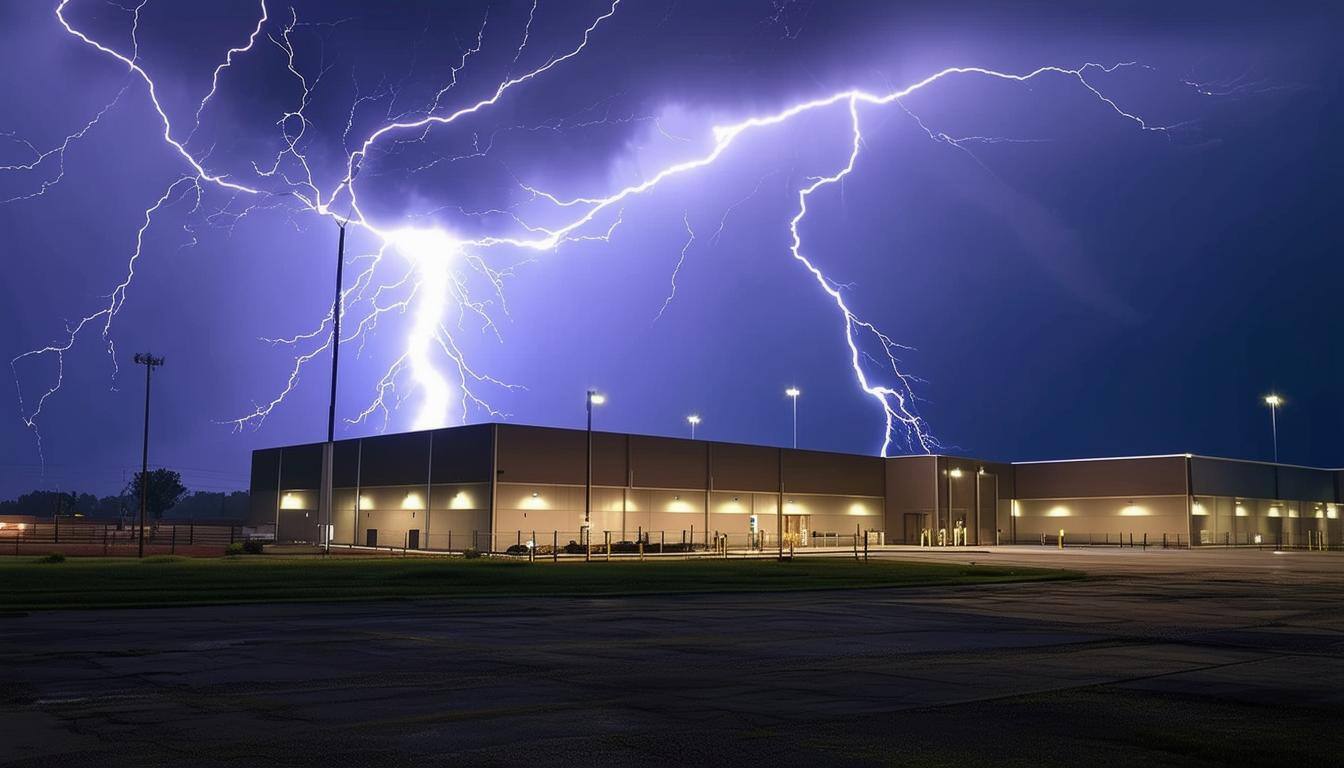When it comes to protecting facilities from lightning damage in the United States, the NFPA 780: Standard for the Installation of Lightning Protection Systems is the go-to reference. This comprehensive standard includes a Lightning Risk Assessment tool found in Annex-L, designed to evaluate the risk posed by lightning strikes to a given facility. However, this tool offers two approaches: the Simplified Lightning Risk Assessment and the Detailed Lightning Risk Assessment.
While the simplified version may seem like an easy and straightforward way to gauge risk, it’s important to understand its limitations and potential implications before relying solely on its results.

What Is the Simplified Lightning Risk Assessment?
The Simplified Lightning Risk Assessment is exactly what it sounds like: a quick, broad evaluation of a facility’s lightning risk. It asks just five questions, considering factors such as:
- Location of the facility
- Construction materials used
- Content value of the building
- Occupancy levels
- Environmental impact of a facility shutdown
These questions aim to provide a general overview of the risk level for a site. However, the results are almost always highly conservative. By design, the Simplified Risk Assessment frequently concludes that a facility’s risk exceeds the default tolerable risk threshold. As a result, it often recommends the installation of a complete NFPA-compliant Lightning Protection System, regardless of whether the actual risk justifies such a costly investment.
Why the Simplified Risk Assessment Can Be Misleading
The simplicity of this tool makes it appealing, but it comes with significant drawbacks. Its generalized approach does not account for the unique characteristics or circumstances of your facility. Instead, it provides a blanket recommendation that may not reflect your actual lightning risk.
This inherent conservatism raises ethical concerns, particularly when the assessment is performed by a Lightning Protection System Installation Firm. Since these firms benefit financially from selling and installing lightning protection systems, they are incentivized to use the Simplified Assessment, knowing it will often overstate the risk and justify their services. This conflict of interest can lead to unnecessary expenses for facility owners.
The Case for the Detailed Lightning Risk Assessment
If you want a more accurate and realistic evaluation of your facility’s lightning risk, the Detailed Lightning Risk Assessment is the better choice. While it requires significantly more effort, involving dozens of detailed questions about your facility, it provides a comprehensive and balanced analysis of your actual risk. The questions cover various factors, including:
- Building design and layout
- Electrical and electronic equipment sensitivity
- Surrounding structures and terrain
- Local lightning density
This level of detail helps identify the real likelihood of lightning damage and whether installing a full lightning protection system is genuinely necessary.
Why Use a Third-Party Engineering Firm?
To eliminate the conflict of interest between risk assessment and product sales, it’s wise to engage a third-party electrical engineering firm. Unlike installation firms, third-party engineers have no financial incentive to recommend unnecessary systems. Their role is to provide an independent, unbiased assessment based on your facility’s specific needs.
A third-party firm ensures:
- A fair evaluation of your facility’s actual lightning risk.
- Clear, unbiased recommendations on whether lightning protection is truly needed.
- Compliance with NFPA 780 standards without the pressure to install expensive systems unnecessarily.
For instance, engineering firms like E&S Grounding specialize in conducting Detailed Lightning Risk Assessments while maintaining ethical obligations to our clients. Our assessments focus solely on protecting your facility and personnel without introducing unnecessary costs.
The NFPA 780 Simplified Lightning Risk Assessment may seem like a quick way to assess risk, but its overly conservative approach often leads to recommendations for costly lightning protection systems that may not be necessary. To ensure an accurate evaluation, opt for the Detailed Lightning Risk Assessment and consider engaging a third-party engineering firm. This approach eliminates conflicts of interest and provides you with the reliable insights needed to protect your facility effectively—without overspending.
When it comes to safeguarding your property and personnel from lightning risks, accuracy and transparency are non-negotiable. Choose the tools and partners that prioritize your best interests, ensuring both safety and cost-efficiency.
The Engineering Experts at E&S Grounding Solutions
Let's Talk! Schedule a FREE Phone Consultation Today.
Wherever you're located, learn how good a fit we are for your project.





